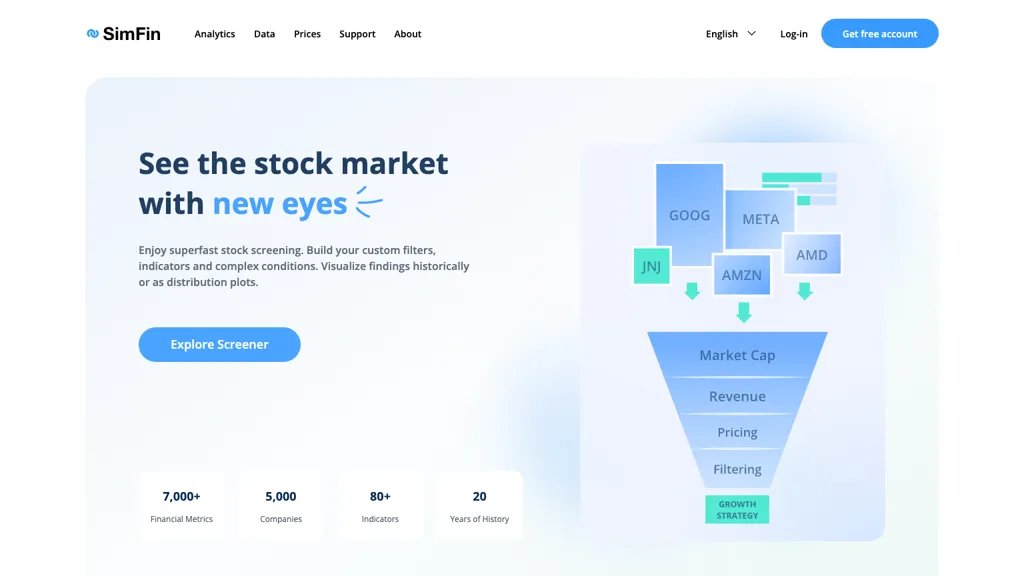20 New Ideas On Selecting AI Stock Picker Platform Websites
20 New Ideas On Selecting AI Stock Picker Platform Websites
Blog Article
Top 10 Suggestions For Looking At Ai And Machine Learning Models On Ai Trading Platforms For Stocks
In order to ensure that you have accurate, reliable, useful insights, it is crucial to examine the AI and machine-learning (ML) models employed by prediction and trading platforms. Models that are overhyped or poorly constructed could result in inaccurate predictions and even financial loss. Here are 10 of the best ways to evaluate the AI/ML models of these platforms.
1. Understand the Model's Purpose and Method of Approach
Determining the objective is important. Find out if the model has been designed to be used for long-term investment or for trading on a short-term basis.
Algorithm transparency: Make sure that the platform provides information on the kinds of algorithms used (e.g. regression, decision trees, neural networks or reinforcement learning).
Customizability - Determine if you can tailor the model to fit your strategy for trading and your risk tolerance.
2. Assess model performance by analyzing the metrics
Accuracy: Verify the accuracy of the model in predicting the future. However, don't solely use this measure because it could be misleading when used with financial markets.
Recall and precision - Assess the ability of the model to detect real positives and reduce false positives.
Risk-adjusted returns: See whether a model's predictions yield profitable trades when risk is taken into consideration (e.g. Sharpe or Sortino ratio).
3. Test the Model with Backtesting
Historic performance: Use previous data to test the model and assess the performance it could have had under the conditions of the market in the past.
Tests with data that were not intended for training: To avoid overfitting, try testing the model with data that was never previously used.
Scenario analysis: Test the model's performance during various market conditions (e.g., bear markets, bull markets and high volatility).
4. Check for Overfitting
Overfitting: Be aware of models that are able to perform well using training data, but don't perform as well with data that has not been observed.
Regularization: Check whether the platform is using regularization methods such as L1/L2 and dropouts to prevent excessive fitting.
Cross-validation is essential: the platform should utilize cross-validation to assess the generalizability of the model.
5. Review Feature Engineering
Relevant features: Verify that the model includes important features (e.g. price volumes, technical indicators and volume).
Choose features: Ensure that you only choose statistically significant features and does not include redundant or irrelevant information.
Dynamic feature updates: Determine that the model can be adapted to new characteristics or market conditions in the course of time.
6. Evaluate Model Explainability
Interpretation: Ensure that the model gives clear explanations of its assumptions (e.g. SHAP values, importance of particular features).
Black-box models: Be cautious of systems that employ extremely complicated models (e.g., deep neural networks) without explainability tools.
User-friendly insights: Find out if the platform gives actionable insight in a form that traders can comprehend and utilize.
7. Reviewing Model Adaptability
Changes in the market: Check that the model is able to adjust to changing market conditions (e.g. changes in regulations, economic shifts or black swan-related events).
Continuous learning: Ensure that the platform is regularly updating the model by adding new data in order to improve performance.
Feedback loops - Ensure that the platform incorporates real-world feedback from users and feedback from the user to improve the design.
8. Examine for Bias and Fairness
Data bias: Ensure that the information used to train is a true representation of the market and is free of biases.
Model bias: Determine if you are able to actively detect and reduce biases that are present in the predictions of the model.
Fairness: Ensure the model doesn't disproportionately favor or disadvantage particular stocks, sectors or trading styles.
9. Evaluate the computational efficiency
Speed: Check whether the model is able to generate predictions in real-time or with minimal latency, specifically for high-frequency trading.
Scalability Test the platform's capacity to handle large sets of data and multiple users with no performance degradation.
Resource utilization: Find out whether the model is using computational resources efficiently.
10. Transparency and accountability
Model documentation: Ensure that the platform provides detailed documentation regarding the model architecture, the training process and its limitations.
Third-party Audits: Check whether the model has been independently checked or validated by other parties.
Verify that the platform is fitted with mechanisms that can detect model errors or failures.
Bonus Tips
User reviews Conduct research on users and study case studies to determine the effectiveness of a model in the real world.
Trial period - Use the demo or trial version for free to try out the model and its predictions.
Support for customers - Ensure that the platform has the capacity to provide robust support in order to resolve technical or model related issues.
With these suggestions, you can assess the AI/ML models on stock predictions platforms and ensure that they are accurate as well as transparent and linked to your trading objectives. Follow the top rated using ai to trade stocks blog for blog tips including ai stock trading app, ai investing app, ai for investing, investment ai, stock ai, ai stock trading bot free, ai for stock predictions, trading ai, ai trading, best ai stock and more.
Top 10 Tips For Evaluating The Maintenance And Updates Of Ai Stock Predicting/Analyzing Platforms
Examining the maintenance and updates of AI-powered trading and stock prediction platforms is critical to ensure they are secure, efficient, and aligned with evolving market conditions. Here are 10 guidelines on how you can evaluate their maintenance and update practices:
1. Updates occur frequently
Check the frequency of your platform's updates (e.g. weekly, monthly or quarterly).
The reason: A regular update shows the active development of market trends and the responsiveness to market developments.
2. Transparency is a key element in the Release Notes
Read the notes on the platform's release to find out what changes or improvements are being made.
Why? Transparent Release Notes show the platform's commitment to continuous advancement.
3. AI Model Retraining Schedule
Ask the AI model what frequency it is trained.
Why? Markets change and models must be updated to ensure accuracy.
4. Correction of bugs and issues
Tip: Check how quickly the platform resolves technical and bug issues.
The reason is that prompt bug fixes will ensure that the platform remains operational and stable.
5. Updates on security
Tips: Make sure that the platform updates regularly its security protocol to secure user data.
Why is it important: Security in financial platforms is essential to guard against breaches and fraud.
6. Integration of New Features
Tips: Find out if the platform introduces new functions (e.g., advanced analytics, or new data sources) in response to user feedback or market trend.
Why: The feature updates show creativity and responsiveness to users' needs.
7. Backward Compatibility
Tip : Make sure that any updates don't interfere with existing functionality or require major configuration.
Why: Backwards compatibility provides a smooth experience for users when they are transitioning.
8. User Communication during Maintenance
TIP: Assess how the platform communicates scheduled maintenance or downtimes to users.
What is the reason? Clear communication creates trust and minimizes disruptions.
9. Performance Monitoring and Optimization
Tip - Check that the platform continually monitors metrics of performance (e.g. latency, accuracy) and then optimizes the system.
The reason: Continuous improvement ensures that the platform is effective and expandable.
10. The compliance with regulatory Changes
Check if the platform has been updated with its policies and features to ensure compliance with any new privacy laws or financial regulations.
Why: To avoid legal risk and maintain user's confidence, compliance with the regulatory framework is vital.
Bonus Tip: User Feedback Integration
Verify that the platform actively incorporating user feedback into updates and maintenance. This shows a focus on the user and a commitment to improving.
By evaluating these factors by evaluating these factors, you can ensure that the AI-powered stock prediction and trading platforms you choose are maintained, up-to-date, and able to adapt to market conditions that change. Take a look at the top rated ai stock predictions info for site tips including can ai predict stock market, how to use ai for stock trading, how to use ai for copyright trading, trading ai tool, ai investment tools, best ai trading platform, how to use ai for stock trading, how to use ai for stock trading, free ai tool for stock market india, best ai penny stocks and more.